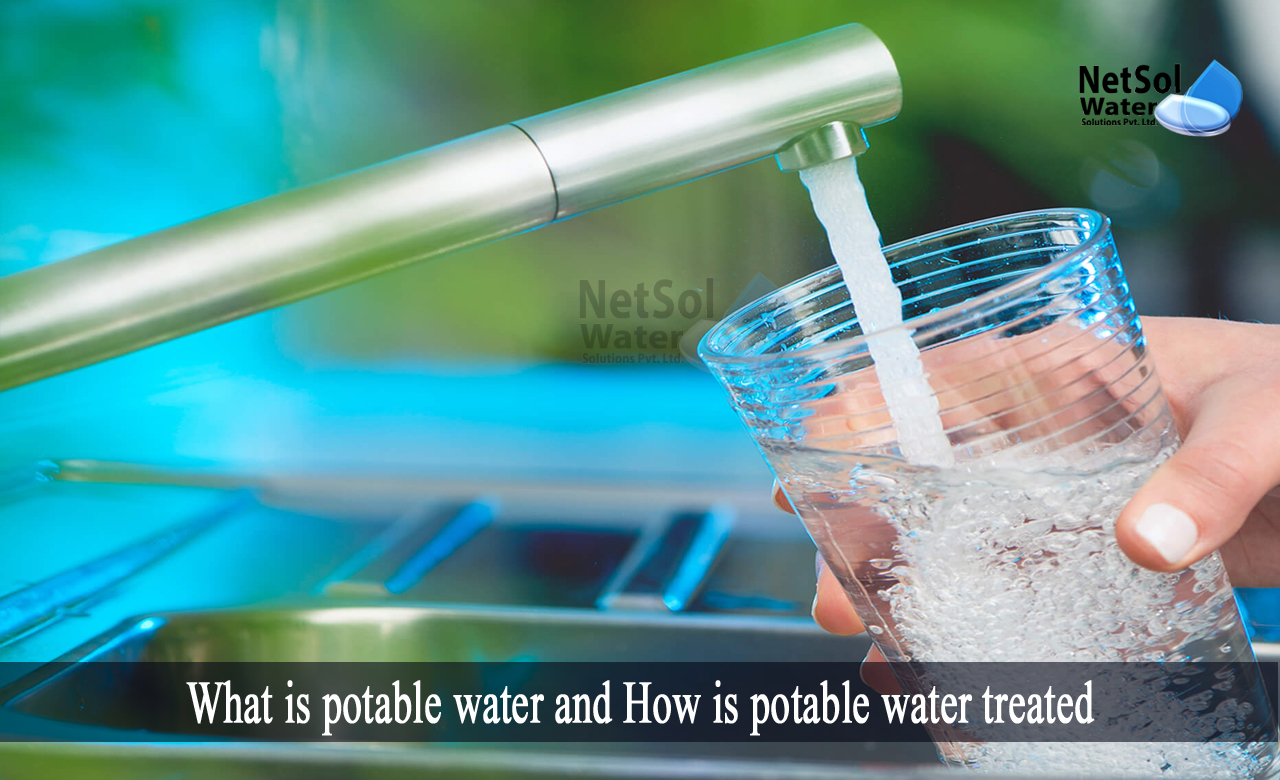What is potable water and How is potable water treated?
The water is potable if you can drink it or cook with it. The World Health Organization (WHO) defines potable water as “water that is free of organic, inorganic, radiological, or microbiological pollution, and does not differ in taste, smell, or appearance”.
The majority of the world's population has regular and convenient access to drinkable water, but about a billion people do not.
Sources of pollutants in potable water
- Organics
Benzene, carbon tetrachloride, vinyl chloride, trihalomethanes, styrene, and polychlorinated biphenyls, are examples of carbon-based chemicals. These chemicals are widely utilized in plastics, synthetic textiles, insecticides, and solvents. They are regularly found in agricultural runoff and industrial waste, as well.
- Inorganics
Heavy metals, mineral acids, salts, cyanides, sulphates, phosphates, and nitrates, are examples of inorganic substances. Many of these toxins are naturally present and leak into freshwater sources. Others are used in fertilizers, metal processing, mining, refining, insecticides, and other industrial activities, where they can flow off into surface waterways or enter groundwater.
- Pathogens
Bacteria, viruses, parasites, and protozoa frequently enter the water supply through faeces. Waste from residential buildings unconnected to sewage systems, or untreated outflow from animal processing businesses, can end up in bodies of surface water.
Treatment processesof Polluted Water
1. Coagulation/Flocculation
Following pretreatment, chemicals are introduced to the influent, to neutralize the overall positive or negative charge of the particles, causing them to no longer oppose one another, and begin to coalesce.
When the tank is gently mixed, the minute particles cluster together to create floc, some of which will float to the top of the solution. The difficulty with this is that the extra chemicals, cause significant amounts of sludge to be produced.
2. Sedimentation/Clarification
The floc created in the previous phase is allowed to settle in the bottom of a tank, and the less turbid water is permitted to travel through a weir in the tank, to the next step.
3. Filtration
The sedimentation effluent is not yet devoid of particle debris. To further reduce it, the solution is put through a filtration system, with pores that are small enough that only water may pass through.
4. Disinfection
The disinfection of pathogens is the critical final stage in drinking water treatment. Strong oxidizers, most often chlorine or chloramine, are added to the solution at this point. They destroy bacteria's cell walls in order to kill them, and prevent them from multiplying.
However, these two disinfectants can produce toxic metabolites that are dangerous to humans. They can also promote pipe corrosion, and because they are created with ammonia, they can also increase nitrification levels.
Advanced water treatment technologies for drinking water
Netsol Water Solutions are a forward-thinking water treatment engineering firm, specializing in custom-designed and modular sophisticated water/wastewater treatment technologies. We use these solutions in place of certain conventional approaches, for drinking water applications:
1. Ultrafiltration
These devices, which use a membrane, can have pore diameters of less than 0.1 microns, and hence eliminate some of the finest particles. They are particularly effective as a pretreatment for RO systems.
2. UV Disinfection
To oxidize the pathogens, UV light is employed instead of chlorine. Instead of molecules, the massless photons created by the light source, drive the breakdown of metabolic processes. UV disinfection produces no hazardous by-products, and it is more successful if the effluent is devoid of suspended matter.
3. Reverse Osmosis
Freshwater sources are no longer the only sources of drinking water. Desalination systems can remove up to 99% of the salts from saltwater. One of the most common systems is reverse osmosis, which uses a pressure differential to force water through a membrane.
4. Advanced Oxidation Process
Advanced oxidation is a tertiary treatment that breaks down micropollutants, into non-harmful components by using a potent oxidant, the hydroxyl radical. Because, such contaminants are so small, they are extremely difficult to eliminate. Typically, a combination of ozone, hydrogen peroxide, and UV light is employed to create the radicals.
5. Electrocoagulation/oxidation
Electrocoagulation is a method of replacing chemical coagulation treatments, whereas,electro oxidation is a type of advanced oxidation. Neither of these approaches requires the use of chemicals to function. They use electrical potential as the driving factor, behind their individual reactions.
How can we assist?
Netsol Water is one of the renowned water treatment plant manufacturers. We believe filtration is an important aspect of most water treatment systems, and choosing the proper water treatment plant can be difficult. Therefore, we offer various advanced technologies for water and wastewater treatment.
Netsol Water is Greater Noida-based leading water & wastewater treatment plant manufacturer. We are industry's most demanding company based on client review and work quality. We are known as best commercial RO plant manufacturers, industrial RO plant manufacturer, sewage treatment plant manufacturer, Water Softener Plant Manufacturers and effluent treatment plant manufacturers. Apart from this 24x7 customer support is our USP. Call on +91-9650608473, or write us at enquiry@netsolwater.com for any support, inquiry or product-purchase related query.



